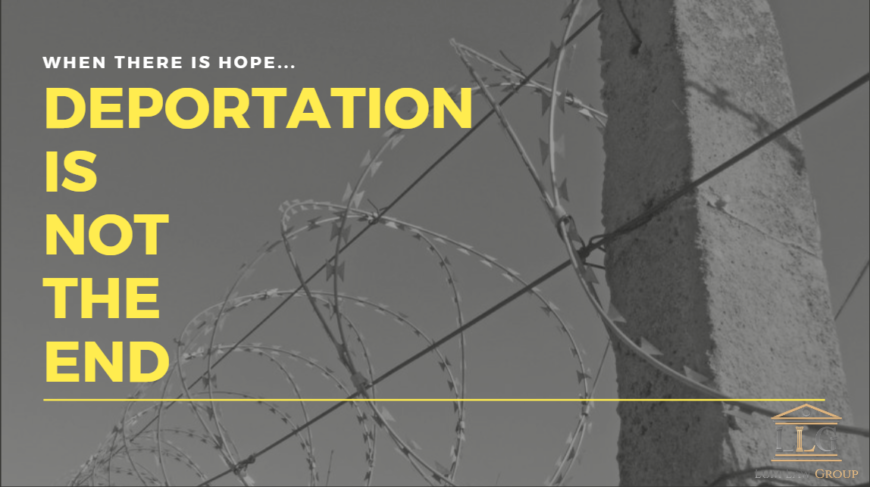How to Prove Extreme and Unusual Hardship
Many of our clients are aware that they need, or will need, a I-601 or I-601A waiver in order to re-enter or apply for a green card in the U.S. Most hardship waivers and relief require proof of “extreme and unusual hardship” to qualify. Many of our clients feel that they meet the requirements. So the question is, how do we prove to Immigration, United States Citizenship and Immigration Services (USCIS), that our clients have extreme and unusual hardship?
What is “Extreme and Unusual Hardship” anyway?
USCIS has released a list of common factors for extreme hardship.
- Health
- e.g., ongoing special treatment for physical or mental condition, chronic vs. acute or long- vs. short-term care
- Financial considerations
- e.g., sale of home/business, cost of care for elderly and sick parents, special education needs of children
- Education
- e.g., disruption of current education program,
- Personal considerations
- e.g., family connection, length of community/social ties
- Special factors
- e.g., fear of persecution, social ostracism or stigma
- Significant factors
- e.g. asylum, refugee, or other temporary protection status
This is in no way a complete list. You may have a situation that is not listed but would qualify for extreme and unusual hardship. If you have questions, feel free to ask a lawyer.
Who qualifies for “extreme and unusual hardship”?
USCIS only considers hardship on a “qualifying relative”, not the applicant. Only the applicant’s U.S. citizen parents or spouse qualify for hardship. The entire application is based on the hardship the applicant’s qualifying relative will suffer if the applicant is deported or not allowed to re-enter the country.
This is not to say you cannot submit items related to, for example, your U.S. citizen children. It just means that any hardship from your children must be presented in relation to how it will pose as hardship to your spouse/parent.
How can I prove “extreme and unusual hardship”?
The specific evidence needed to prove extreme and unusual hardship depends on your individual situation, the factors you qualify for, and the strength of those factors. Having said that, it’s important to know that any statement or explanation should be backed up by evidence. The burden of proving extreme and unusual hardship is on the applicant.
For example, if you claim hardship based on medical or health concerns, you need to submit medical reports and/or a healthcare professional’s statement. If for some reason you cannot get a copy or a new statement about your condition, you need to explain why.
Here are some examples USCIS has listed in their policy manual:
- Payroll and tax statements to show employment and business ties
- Evidence of monthly spending, such as mortgage statements, rental agreements, bills and invoices
- Medical documentation for any health concerns
- Expert opinions
- Records of members in community organizations, volunteer confirmation and evidence of cultural affiliations
- Birth/marriage/adoption certificates proving family ties
- Country condition reports
- Affidavits by qualifying relative declaring personal knowledge of claimed hardships
In addition, our office usually provides a budget template to see if our clients qualify for financial hardship. We research the city, county, and country you’d be living in, and we help you look for jobs, schools, or even medical facilities.
What does it mean to prove “extreme hardship under two scenarios”?
USCIS requires that extreme hardship be proven under two scenarios: 1. where the applicant is deported or not allowed to re-enter, and 2. where the applicant leaves/does not re-enter but the qualifying relative(s) lives with them outside the U.S.
Many of our clients who are “qualifying relatives” will often exclaim that they do not want to consider “the other scenario” because it is not an option for them. Keep in mind that these scenarios are hypothetical right now, but could become reality should the waiver or relief not be granted. As such, we need to consider them as we would consider any international move: with detail and seriousness. Every claim made has to be supported by evidence.
What is not considered “extreme and unusual hardship”?
The opposite of “extreme and unusual hardship” is common hardship. Expected consequences of denial or readmission or deportation include:
- the heartbreak of family separation
- less income or financial ruin
- challenges in adjusting to another country
- poorer education opportunities abroad
- poorer medical services abroad
- poorer employment or career opportunities abroad
The USCIS Policy Manual, Volume 9, Part B, Chapter 5, Extreme Hardship Considerations and Factors goes into detail with examples of what counts as “common hardship” and what counts as “extreme and unusual hardship”.



